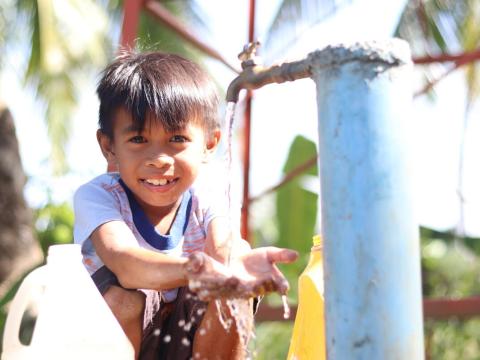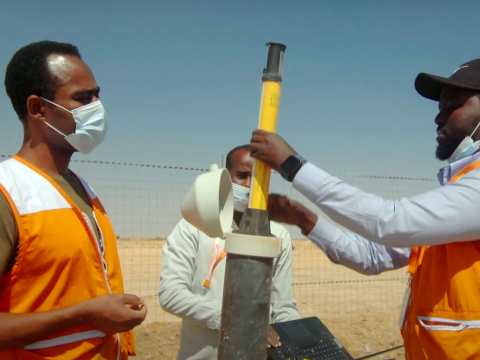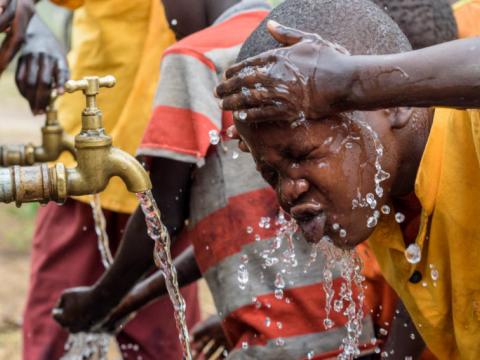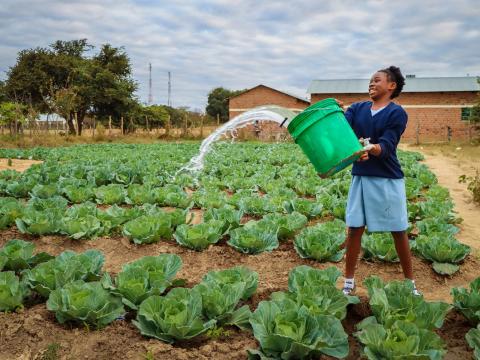
How can we maximize funding to reach everyone with safe water and sanitation?
Peter Hynes argues that leveraging existing investment better will help with the current funding gap in water, sanitation and hygiene around the globe.
Estimates of the current annual gap in financing to reach U.N. Sustainable Development Goal (SDG) 6, water and sanitation for all, vary from $30 billion on the low end to $1.1 trillion on the high end [1]. While experts agree that we are not spending nearly enough to achieve the ambitious water, sanitation, and hygiene (WASH) targets, there is no consensus on where that additional money could come from.
Finding solutions to increase financing is an extremely important topic in the WASH sector, but even if we focus on the lower estimate of the funding gap, the magnitude of the problem is staggering. One could be excused for feeling pessimistic at times about finding a solution. Therefore, instead of proposing where we can find hundreds of billions in additional investment, let’s explore how to maximise the currently available development funding.
Leverage Existing Funds
Fundraisers have known for decades that a good match can do wonders for enthusiasm; people are more likely to give if they know their impact will be multiplied by other funding. The same is true for people deciding where to invest existing funds. Utilising excitement over match funding has been World Vision’s strategy since the advent of our WASH Business Plan in 2010. Thanks to generous private donors, we invest flexible funding into country WASH programs. Local WASH managers use this funding not only to invest in strategic personnel and to showcase innovative work to potential funders, but also to convince other internal funding streams (i.e. child sponsorship) to spend on WASH through matching investments.
The education team, for instance, is more likely to spend some of their funding on improving WASH in schools if they know the amount will be doubled thanks to flexible WASH funding. Our current Global WASH Business Plan showcases a 4:1 leverage ratio resulting in $1 billion in financing available for WASH services. Thanks to the flexible funding World Vision puts in, we’ve seen quadruple the impact of what we would have seen had we used that donor funding for specific, rigidly defined projects.
This highlights the key principles of flexibility and local autonomy. Relinquishing the top-down approach allows for more creative problem-solving at the country or sub-national level. It may seem counterproductive not to specify exactly where every dollar should go, but colleagues at the local level are better able to target funding to strategic needs than HQ staff, ultimately resulting in a higher probability of leveraging additional funding for existing WASH needs.
Leverage Relationships for Government Investment
Another way to maximise potential funding for WASH is by encouraging governments to invest their WASH budgets alongside outside investment. A recent World Bank analysis showed that, on average, 30% of local government WASH budgets go unspent by the end of the year. As a sector, we are leaving money on the table that could have gone toward our financing gap.
At World Vision, we include local governments from the beginning and ask them to contribute funding toward both the capital investment and the ongoing operational costs of each water system. This allows governments to deliver larger systems for their constituents than they would have been able to build on their own, and their commitment through a signed agreement on each project prevents governments from leaving budgets unspent.
Co-financing arrangements can be challenging to work out; it is difficult to determine who will pay for what, especially when procurement and internal controls may not align. A high level of trust is needed to work through these challenges. At World Vision, where we spend 10-15 years in an area, we build strong relationships with local government resulting in a trust that allows for the possibility of co-financing projects. In World Vision’s Rwanda WASH Programme, for example, we have seen district governments invest $14 million in systems that were co-designed with World Vision over the last 5 years. We have seen similar successes in Kenya, Uganda, Ghana and elsewhere, with districts stepping forward and leading the way for co-financing and design.
Conclusion
While there is still a huge need for new funding in the sector, we must remember to maximise the funding that is already available to us for WASH. By allowing for local decision-making and by building strong relationships with local governments, we can leverage existing financing for even more impact. In showcasing the effectiveness of leveraged spending, perhaps other potential funders that are sitting on the sidelines will be encouraged to invest in the sector and begin to make a dent in the WASH funding gap. That gives this professional hope, and something concrete to work toward.
Learn more about our water, sanitation and hygiene work here.
About our engagement with the All Systems Connect Conference here
Peter Hynes is WASH Programme Manager at World Vision US.
1. Kulkarni S, Hof A, Ambrósio G, Edelenbosch O, Köberle AC, van Rijn J, et al. (2022) Investment needs to achieve SDGs: An overview. PLOS Sustain Transform 1(7): e0000020. https://doi.org/10.1371/journal.pstr.0000020


